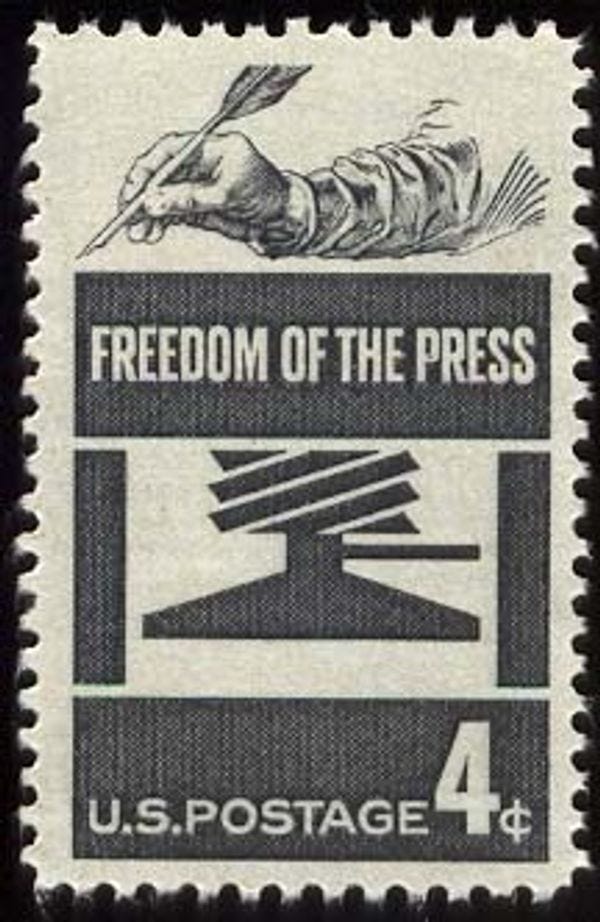Seattle Judge Lets Cops Rifle Through Reporters' Footage, Because Them And What Army?
How many divisions has the Seattle Times?
And for today's news on our police state, we go to Seattle, Washington.
Yesterday, King County Superior Court Judge Nelson Lee ordered five different news organizations to turn over to law enforcement photos and video taken during a George Floyd protest in May. Because federal troops storming our cities and disappearing people just isn't enough!
On May 30, five days after Derek Chauvin killed George Floyd, Seattleites took to the streets to protest. The vast majority of the protesters were peaceful; however, a small group of people broke off from the main protest and allegedly vandalized police cars and took tactical helmets and two guns.
Journalists from the Seattle Times and local TV stations KIRO, KOMO, KING, and KCPQ were all there to report on the protests. The Seattle Police Department filed a subpoena for video and photographs taken that night. And over the strong objection of the media organizations, a judge ordered the reporters to hand their materials over to the cops.
Despite the First Amendment's declaration that the freedom of the press shall not be abridged, the Supreme Court has never ruled that the First Amendment protects journalists' notes and other raw materials from being subpoenaed. Because of this, around 30 states states have enacted shield laws designed to protect reporters.
Washington, believe it or not, is one of the states with a shield law. Although Washington's shield law, Wash. Rev. Code § 5.68.010, was designed to protect journalists from exactly this type of subpoena, Judge Lee ruled that it was inapplicable and ordered the news organizations to produce their newsgathering work product to the police.
The news organizations, for their part, fought the subpoena and criticized Judge Lee's ruling after the hearing.
Seattle Times Executive Editor Michele Matassa Flores said the paper strongly opposes the subpoena and "believes it puts our independence, and even our staff's physical safety, at risk."
*The media exist in large part to hold governments, including law enforcement agencies, accountable to the public," said Matassa Flores. "We don't work in concert with government, and it's important to our credibility and effectiveness to retain our independence from those we cover."
Danny Gawlowski, the assistant managing editor of the Times , wrote in an affidavit that working with the police would put journalists in danger.
The perception that a journalist might be collaborating with police or other public officials poses a very real, physical danger to journalists, particularly when they are covering protests or civil unrest. Enforcing the subpoena also will aggravate the distrust journalists already face in covering protests.
The Reporters Committee for Freedom of the Press had also filed an amicus brief in the case, arguing
Enforcement of the Subpoena could mislead the public into perceiving reporters at protests as a mere arm of law enforcement, thus eroding public trust in the news media and increasing the already-significant risk of physical harm that journalists face when covering protests.
Eric Stahl, the lawyer representing the news outlets, argued at a hearing that the subpoena was "unprecedented" and that the Seattle Police Department was on a "fishing expedition and has not come close to meeting its burden" under Washington's shield law, noting that the subpoena "doesn't target a single reporter or two, it's a blanket that targets every major outlet in the city[.]"
Judge Lee, however, disagreed, finding that the reporters' images were "highly material and relevant" and "critical or necessary" to the police investigation. This, despite the fact that SPD Detective Michael Magan, on whose affidavit Lee relied, testified that it was a "coin toss" whether the subpoenaed materials would help the police investigation.
The media companies did win some concessions, with the judge limiting the both the scope of the order and what SPD could do with the images.
[Judge Lee] said police could use the images to identify suspects only in the arson and gun theft investigations. Detectives could not use the photos or video to pursue suspects in vandalism or other lesser crimes — even if police found such evidence.
I know I sure trust the police to follow that directive.

The order was also limited to "professional camera equipment," excluding reporters' cell phone footage.
Judge Lee will hold another hearing next Thursday to enter a final order.
The news organizations have not yet decided whether to appeal the ruling. If they believe they will lose on appeal, it may make sense to drop the case and avoid the risk of creating bad case law from the state's appellate courts.
In the meantime, Trump's federal goon squad is headed to Seattle. Agents from Customs and Border Protection's Special Response Team, who "are typically deployed for intense law enforcement operations," are already on their way to the Emerald City, we guess to disappear people, violate the Constitution, and attack protesters, like they've been doing in Portland.
Everything is fine ...

[ Seattle Times / WaPo / RCFP / Courthouse News / Wash. Rev. Code § 5.68.010 ]
Follow JLC on Twitter !
Do your Amazon shopping through this link, because reasons .
Wonkette is ad-free and funded ENTIRELY by YOU. Please help us pay the writers, if you appreciate us!




Thank goodness our "president" isn't too shrill!
In his dreams and in his books.